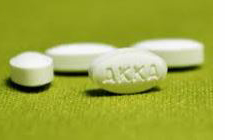TDR initiated research to evaluate whether moxidectin could improve prospects for elimination of onchocerciasis and/or lymphatic filariasis already in the late 1990 within its research agreements with the Onchocerciasis Control Programme in West Africa (OCP, 1974–2002) and the African Programme for Onchocerciasis Control (APOC, 1995 – 2015).
TDR funded pre-clinical studies and managed the collaboration with the pharmaceutical company which owned moxidectin at the time for pre-clinical safety studies, development of a formulation suitable for use in Africa and clinical studies in healthy volunteers. TDR also funded, built the capacity for and managed conduct of the clinical studies in O. volvulus infected individuals in Ghana, Liberia and the Democratic Republic of the Congo (DRC).
Research capacity building for the Phase 3 study in Liberia and DRC was more extensive than is typical for TDR-funded studies since it occurred in areas that were recovering from recent conflicts and had no clinical research capacity. Three new clinical research centres (1 in Liberia, 2 in DRC) were created, while only strengthening of the centre in Ghana was created since this center had conducted TDR-funded studies since it was created with TDR support in 1977. The buildings, equipment and skilled staff provided through the moxidectin project have since contributed to other research for control of onchocerciasis and lymphatic filariasis. Organizations and researchers interested in conducting studies in these countries can find the available resources and contact information in the publication below.
The majority of the funds TDR spent on moxidectin research and development came from TDR donors, the Onchocerciasis Control Programme in West Africa (OCP, 1974–2002) and the African Programme for Onchocerciasis Control (APOC, 1995 – 2015).
The studies showed that the safety profile of moxidectin is similar to that of ivermectin but that moxidectin reduces skin microfilariae levels in more individuals to a higher extent and for longer than ivermectin. The data thus suggest that moxidectin could advance progress towards control of onchocerciasis as a public health problem and elimination of parasite transmission.
In 2014, WHO licensed all data on moxidectin at TDR’s disposal to the Not-for-Profit pharmaceutical company Medicines Development for Global Health (MDGH). MDGH raised the funds required and completed all work necessary for a submission for regulatory approval of moxidectin for the treatment of onchocerciasis in ≥ 12-year-old individuals by a ‘Stringent Regulatory Authority’.
In 2018, moxidectin was registered by the regulatory agency of the United States of America, the US Food and Drug Administration (US FDA), for treatment of onchocerciasis in ≥12 year old individuals, the first new drug for onchocerciasis receiving regulatory approval in the US in 20 years and worldwide in 30 years.
 The story behind AKKA, the initials imprinted on the tablets of moxidectin, the first new treatment for river blindness in 30 years, as told by our partner Medicines Development for Global Health which registered moxidectin with the US FDA using the data from two TDR funded and managed trials in Africa.
The story behind AKKA, the initials imprinted on the tablets of moxidectin, the first new treatment for river blindness in 30 years, as told by our partner Medicines Development for Global Health which registered moxidectin with the US FDA using the data from two TDR funded and managed trials in Africa.
Current activities
TDR is now using its expertise and experience to provide scientific and technical support to MDGH and partners in Africa for studies that will provide additional data to inform WHO guidelines, country policies and implementation of moxidectin for onchocerciasis elimination (MoxiMultiDoseMod):
- A pharmacokinetic and safety study to identify a moxidectin dose for children 4 to 11 years (NCT03962062) is under way in Ghana by Dr. Opoku and his team from the University of Health and Allied Sciences
- A study to compare the efficacy and safety of 3 annual or 5 biannual doses of moxidectin or ivermectin in 1000 Onchocerca volvulus infected people is being conducted by Drs Tony Ukety and Michel Mandro and their team at the Centre de Recherche en Maladies Tropicales (CRMT) in Rethy, Ituri, DRC (NCT03876262)
- A study in 12,500 individuals with or without O. volvulus infection as diagnosed via microscopic identification of microfilariae in the skin is designed to increase the data base on safety of moxidectin in a population similar to that which would receive moxidectin during mass drug administration. This study was initiated by Drs Tony Ukety and Michel Mandro and their team at the Centre de Recherche en Maladies Tropicales (CRMT) in Rethy, Ituri, DRC. Expansion into another study area is under consideration (NCT04311671).
The studies at the CRMT Ituri are utilising and expanding the clinical trial capacity built by TDR for the Phase 3 study of moxidectin in DRC.
The studies are co-funded by MDGH, the European and Developing Countries Clinical Trials Partnership (EDCTP) and the Luxembourg National Research Fund (FNR).
Discussions on pilot implementation projects in collaboration between country NTD/onchocerciasis elimination programmes and Non-governmental development organisations working with these programmes are underway.
The size of the currently available formulation of moxidectin, a 2 mg tablet, was chosen to allow potential inclusion of 4-year-old children in large scale use of moxidectin, as per the advice TDR had received from the Technical Consultative Committee of the African Programme for Onchocerciasis Research.
In view of small 4-5-year-old children not able or willing to swallow the tablet and in view of the potential utility of moxidectin for treatment of smaller children for onchocerciasis or other indications, TDR is also providing scientific and technical advice to MDGH and partners in Africa on the development of a paediatric formulation (MiniMox).
MiniMox is co-funded by MDGH, the EDCTP and the Luxembourg National Research Fund (FNR).



